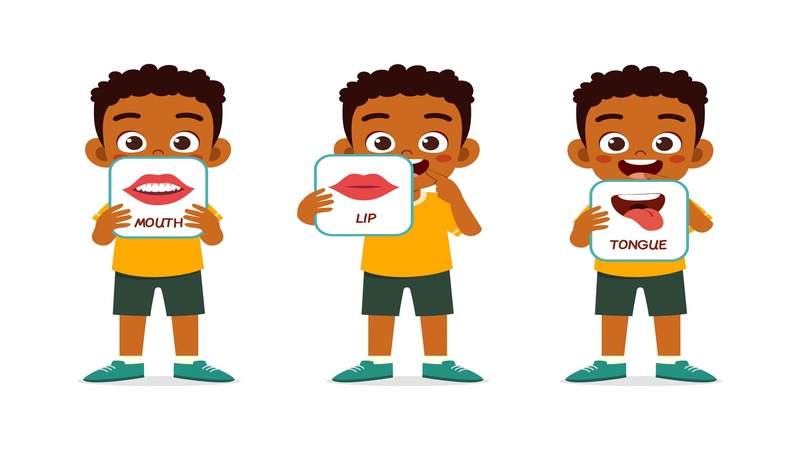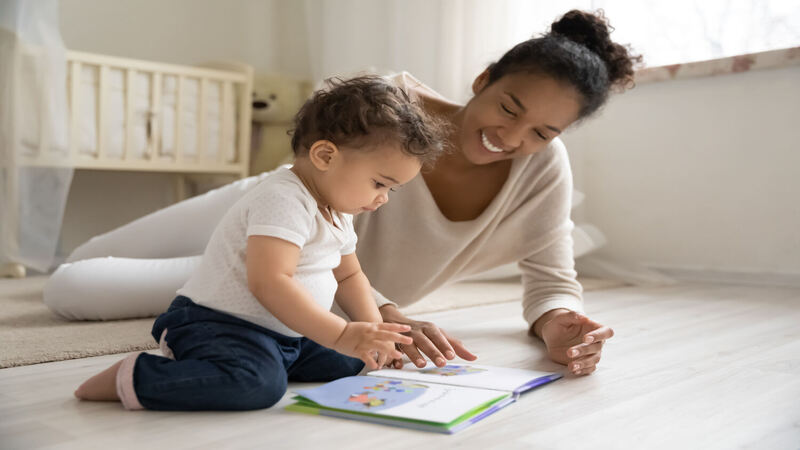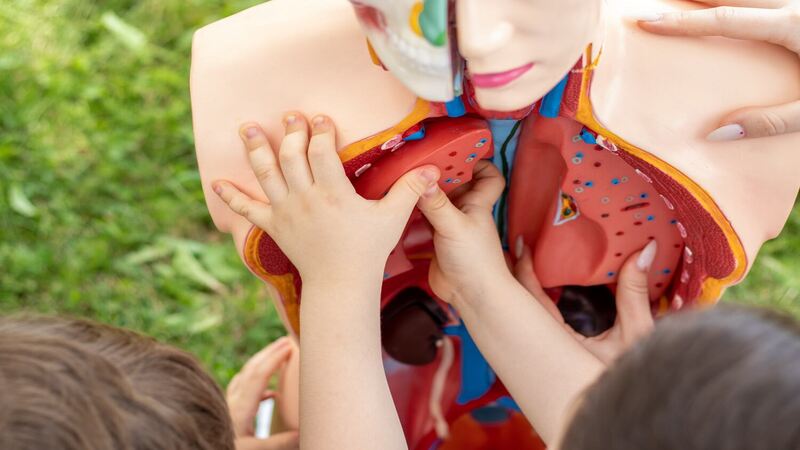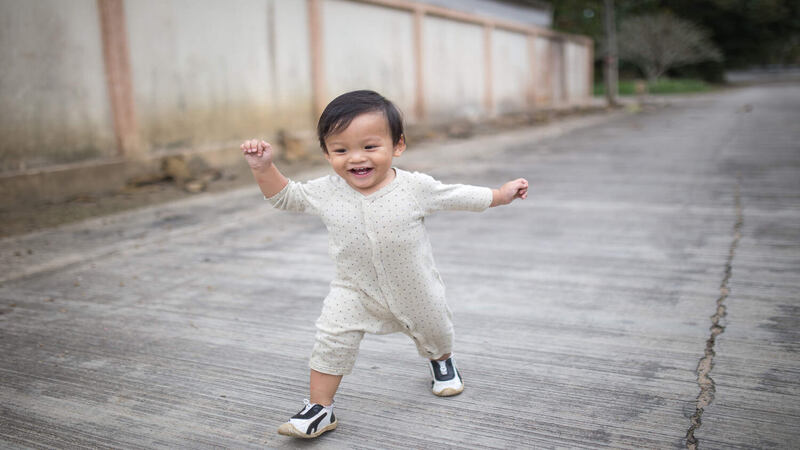
“Head, shoulders, knees and toes, knees and toes,
Eyes and ears and mouth and nose.
Head, shoulders, knees and toes, knees and toes”
A very famous nursery rhyme that is common between all toddlers and even indicates that the tiny tots are now ready to learn as they touch the specific parts while they enjoy. This is the time to be proud of the little one. This and rhymes like these that focus on different body parts help the kid to learn while singing and dancing. This is also an action song which helps in teaching body parts to toddlers in an exciting way.
Teaching body parts to toddlers is by far the easiest for parents much before they start going to school as these are used in day to day life. It is common for parents to make them used to eyes, ears, cheeks, chin, hands, legs etc. The toddler also gets fascinated to learn these and starts responding as soon as they are told to touch the body parts. It is fun for them to be able to touch the parents’ eyes, cheeks, clap with them, jump with them and so on and so forth.
In This Article
- When to Start Teaching Toddlers About Body Parts?
- Benefits of Teaching Your Kid About Body Parts
- How to Teach Body Parts to a Toddler?
- Why is it Important For Toddlers to Learn About Body Parts?
- How Can I Teach my Toddler About Private Body Parts?
- FAQ’s
When to Start Teaching Toddlers About Body Parts?

Body parts are generally the first words taught by the parents to the toddlers. It is actually fun to make the tiny tots learn their body parts like nose, eyes, ears etc. Tiny tots who are six months to an year old are able to learn the body parts with ease though they might not speak it clearly. But generally by the time they are between 24 months to 30 months they do start speaking clearly (1a).
There is however, no specific age to start teaching the toddler. This must be taught to the tiny tots as soon as possible. As early as they associate the correct words for their body parts, the sooner they speak them and become aware of their bodies.
Benefits of Teaching Your Kid About Body Parts

It is important to teach body parts to toddlers for their proper development. It helps them have a good understanding of their surroundings, their own body, and the people around them. Few benefits of teaching the toddler about the body parts are-
1. Body Awareness
- It is good to make the toddler aware of their body parts as it creates awareness
- They can learn different names and functions of the various body parts by the help of some nursery rhymes
- Knowing about their own body makes them independent and they are cautious about themselves (2)
2. Language Development
- Toddlers can learn different names that help in increasing their knowledge
- If the toddler knows the name of the body parts, they can properly communicate to others and can even talk about themselves
- This is a good way to enhance their social skills and even build healthy relationships with others (1b)
3. Protection
- If the toddler is aware of the names given to different body parts, it helps them avoid any sort of abuse
- In case the little one has been through an abuse, knowing the exact name helps them to express which part they were touched in an appropriate manner
- It makes it easier for the authorities, parents or guardians to understand as well as catch the abuser and even offer protection to the tiny tot
4. Confidence And Self-Esteem
- An extremely important reason for teaching body parts to toddlers is to boost their confidence level
- When the tiny tot is aware of their body at a young age, they then develop into adults who appreciate their body by being strong, active and healthy
How to Teach Body Parts to a Toddler?

Teaching body parts to toddlers is a simple yet effective way to support their development in multiple areas. Teaching the toddlers is not a very difficult task and there are many ways in which you can impart knowledge about the different body parts. Some good ways of teaching body parts to a toddler are by-
1.Teach Them Through Questions
It is a good way to engage the tiny tot by asking questions regarding specific body parts. This makes them learn while they play, and it is not boring. You can play a quiz, like-
- Asking them “ What part of the body helps you to smell?
- Two little _______ to see see see
- Show me daddy’s chin
- Where are mumma’s chubby cheeks?
2. Teach Them Through Songs
It is very easy for a toddler to remember and adapt things while they sing along. This is something that they find interesting.
- Learning through nursery rhymes like heads shoulders, Simon says touch your nose, two little hands to clap clap clap clap, here we go round the mulberry bush, this is the way we comb our hair etc., are some of the rhymes that kids take interest in, and keep doing it with actions
- They love to do things in a fun way especially when associated with singing and dancing
3. Teach Them Through Visuals
Visuals are another way that toddlers show interest in learning.
- Get picture books that help them in understanding body parts
- Posters that can help you point out the different body parts
- In the present scenario, making them watch videos that enables them to copy what is being done on screen in the rhyme (3)
4. Teach Them Through Explanations
- A good way of teaching body parts to toddlers is through giving brief explanations of the function of each body part
- Telling them eyes help to see, nose is for smelling, tongue for tasting etc.
- They become much more aware of themselves and this also helps them to learn both the names as well as their functions
5. Teach Them Variations
- If the tiny tot gets bored learning through their own body parts or of the family members, it is best to make them touch and explain the body parts on their favorite animal toy
- Animals also have some extra body parts that humans do not, this even helps the kid to increase their vocabulary span
- Organs like tails, long ears, wet nose etc. can even be taught by comparing with humans
6. Teach Them Through Props
- While reading bedtime stories, you can ask the toddler to pinpoint the various body parts as used in the story like Cinderella wearing silver shoes in the feet etc.
- Give them stickers or stamps and tell them to apply on different body parts
- Use a small animal toy and make them point at its different body parts
Why is it Important For Toddlers to Learn About Body Parts?

It is simple yet challenging to teach body parts to toddlers. It even helps with their development and has umpteen benefits as it creates a sense of awareness in them. This helps them to enhance their communication and even increase the vocabulary database. Out of the many benefits, few are listed as under-
Cognitive Development
- Toddlers learn about cause and effect when they learn about the body parts and their respective functions
- This knowledge also helps to enhance their science and math skills when they grow up
Emotional Development
- Learning about the body parts help the toddlers with their emotional development
- This also results in less tantrums and offers them better emotional intelligence (1c)
How Can I Teach my Toddler About Private Body Parts?

It is seen that generally the parents are only teaching body parts to toddlers for the ones that are visible to the little one. Very often, parents use code words and nicknames when it comes to teaching them about their private organs.
- When the toddler turns three years old, they are able to differentiate between boys and girls
- Parents generally refer to the private parts by code words like pee or su-su. This is a concern for shame for the little one when they go to playschools as every toddler speaks specific words and this tends to develop a negative attitude towards their private parts
- Research now shows that it might be better to teach the kid the “right word” for all the body parts, including private ones (1d )
- It is not something for the parents to feel ashamed of
- When the parent is not reluctant, they choose the correct usage of the word, then the toddler is much more confident
Thus, teaching body parts to toddlers is significant for their development. It helps to develop the body awareness, the vocabulary span, offers protection, boosts their morale and confidence. It is also helpful for the caregivers, parents etc. if this learning is continued in daily activities as well.
FAQ’s
1. Why is it Important to Teach Body Parts?
Teaching body parts to a toddler is important for making them aware of themselves, boosting their morale, confidence, and self-esteem.
2. Should I Use Anatomically Correct Terms When Teaching Body Parts to Young Children?
Using correct terms while teaching body parts to toddlers makes it clear for them. They can use it socially and express themselves confidently. This makes it easier for others to understand.
References
- Development of Body Part Vocabulary in Toddlers in Relation to Self-Understanding – [https://www.ncbi.nlm.nih.gov/pmc/articles/PMC4505369/]
- A Systematic Review of Interventions Related to Body Awareness in Childhood – [https://www.ncbi.nlm.nih.gov/pmc/articles/PMC9330007/]
- What are the benefits of using visual learning in kindergarten? – [https://typeset.io/questions/what-are-the-benefits-of-using-visual-learning-in-3ytj0pui2y]
